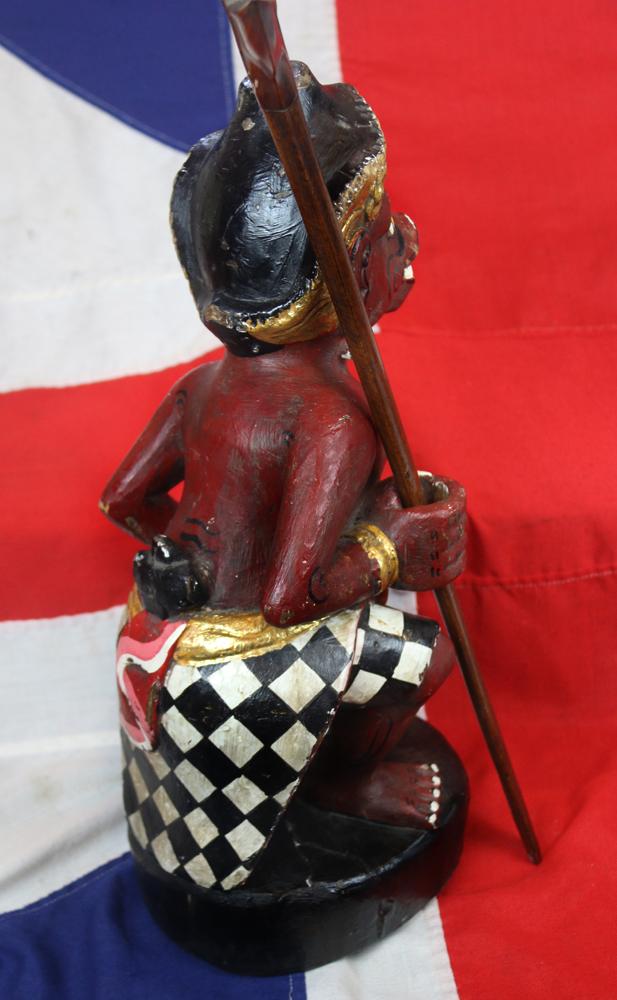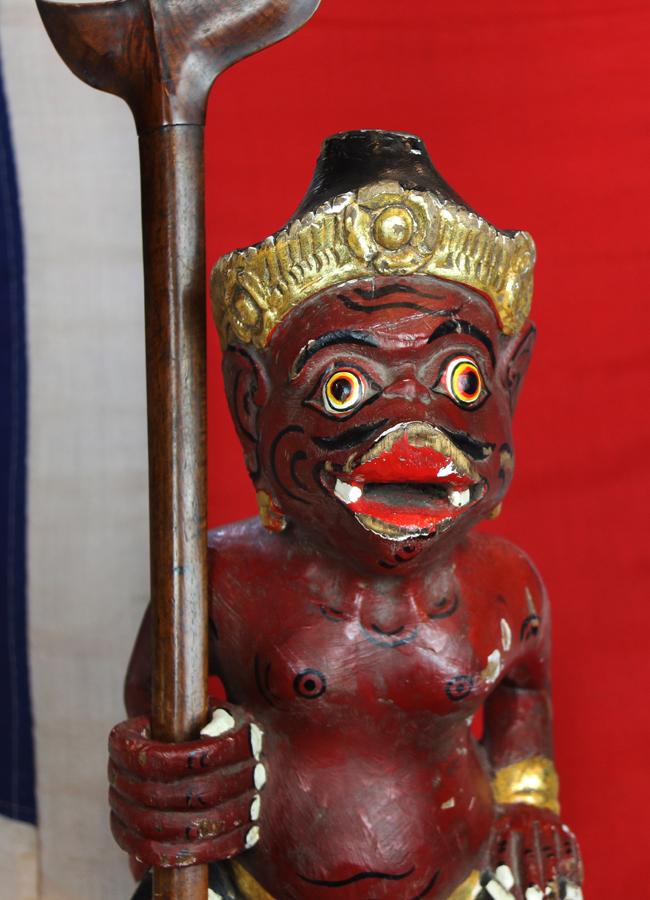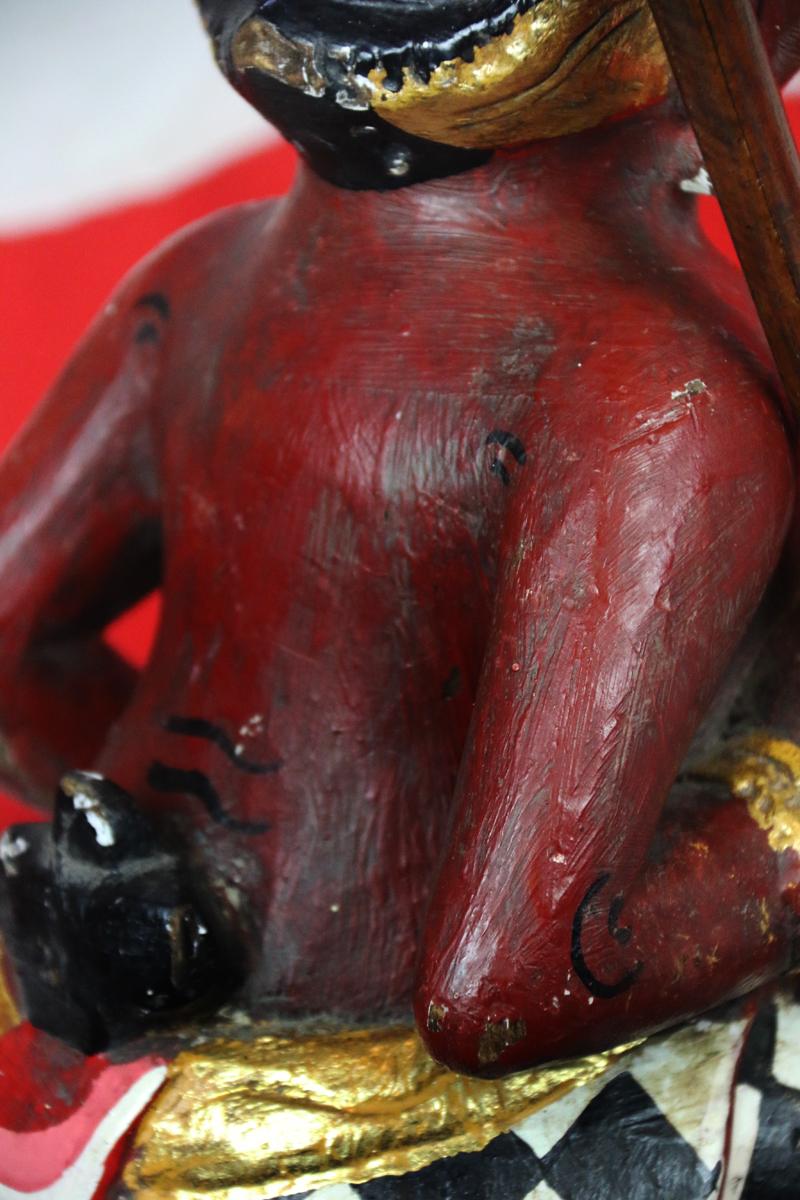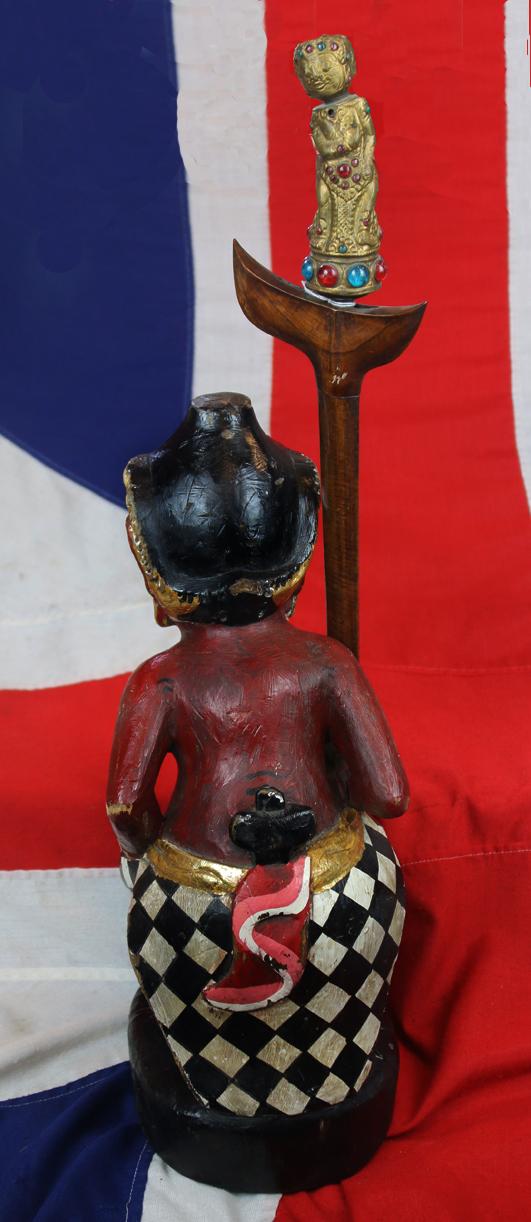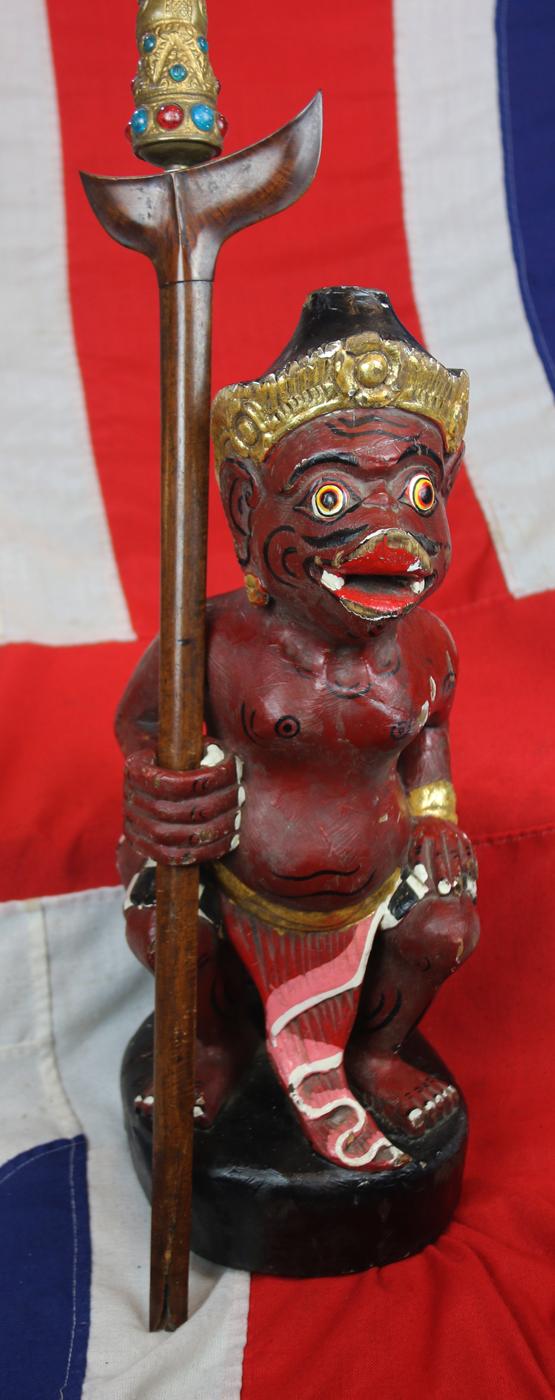A Super Balinese Carved Wooden 'Demon Kris Stand Probably Representing One of the Vanaras, Forest Dweller Human-Ape Like Demi-God Warriors That Helped Rama Defeat Ravana
Possibly representing Hanuman, or Anoman, one of the Vanara human-apes of Ramayana epic. In Hindu mythology, Vanara forest-dwellers, either refers to the monkeys or a race of forest dwelling people. In the epic the Ramayana and its various versions, the Vanaras help Rama defeat Ravana. They are generally depicted as humanoid apes or monkeys. Vanaras are created by Brahma to help Rama in battle against Ravana. They are powerful and have many godly traits. Taking Brahma's orders, the gods began to parent sons in the zion of Kishkindha (identified with parts of present-day Karnataka, Andhra Pradesh & Maharashtra). Rama first met them in Dandaka Forest, during his search for Sita. An army of Vanaras helped Rama in his search for Sita, and also in battle against Ravana, Sita's abductor. Nala and Nila built a bridge over the ocean so that Rama and the army could cross to Lanka. As described in the epic, the characteristics of the Vanara include being amusing, childish, mildly irritating, badgering, hyperactive, adventurous, bluntly honest, loyal, courageous, and kind
Carved in one piece of wood vividly decorated in polychrome colours, approx 18 inches high, 9 inches deep.
The respect with which krises were always treated extended to the careful attention given to them even when they were not being worn. The weapons were stored in fitted bags, custom-made boxes and chests, and on wall-mounted display boards, as well as in kris stands. The use of three-dimensional sculptures as kris stands, however, was limited to the islands of Bali and Lombok. Not including the kris as shown. The kris or kêrìs "to slice"; is an asymmetrical dagger with distinctive blade-patterning achieved through alternating laminations of iron and nickelous iron (pamor). While most strongly associated with the culture of Indonesia the kris is also indigenous to Malaysia, Thailand, Brunei, Singapore and the Philippines where it is known as kalis with variants existing as a sword rather than a dagger. The kris is famous for its distinctive wavy blade, although many have straight blades as well. Kris have been produced in many regions of Indonesia for centuries, but nowhere—although the island of Bali comes close—is the kris so embedded in a mutually-connected whole of ritual prescriptions and acts, ceremonies, mythical backgrounds and epic poetry as in Central Java. As a result, in Indonesia the kris is commonly associated with Javanese culture, although other ethnicities are familiar with the weapon as part of their culture, such as the Balinese, Malays, Sundanese, Madurese, Banjar, Thais, Bugis, Makassar, and Filipinos. Kris history is generally traced through the study of carvings and bas-relief panels found in Southeast Asia. It is believed that the earliest kris prototype can be traced to Dongson bronze culture in Vietnam circa 300 BC that spread to other parts of Southeast Asia. Another theory is that the kris was based on daggers from India.[7] Some of the most famous renderings of a kris appear on the bas-reliefs of Borobudur (825) and Prambanan temple (850).
However, Raffles' (1817) study of the Candi Sukuh states that the kris recognized today came into existence around 1361 AD in the kingdom of Majapahit, East Java. The scene in bas relief of Sukuh Temple in Central Java, dated from 15th century Majapahit era, shows the workshop of a Javanese keris blacksmith. The scene depicted Bhima as the blacksmith on the left forging the metal, Ganesha in the center, and Arjuna on the right operating the piston bellows to blow air into the furnace. The wall behind the blacksmith displays various items manufactured in the forge, including kris. These representations of the kris in the Candi Sukuh established the fact that by the year 1437 the kris had already gained an important place within Javanese culture. The best material for creating kris pamor, was acquired in a quite unusual way, as it is made from rare meteorite iron. Traditionally the pamor material for the kris smiths connected with the courts of Yogyakarta and Surakarta originates from an iron meteorite that fell to earth at the end of 18th century in the neighborhood of the Prambanan temple complex. The meteorite was excavated and transported to the keraton of Surakarta; from that time on the smiths of Vorstenlanden (the Royal territories) used small pieces of meteoric iron to produce pamor patterns in their kris, pikes, and other status weapons. After etching the blade with acidic substances, it is the small percentage of nickel present in meteoric iron that creates the distinctive silvery patterns that faintly light up against the dark background of iron or steel that become darkened by the effect of the acids
Code: 24195
550.00 GBP



